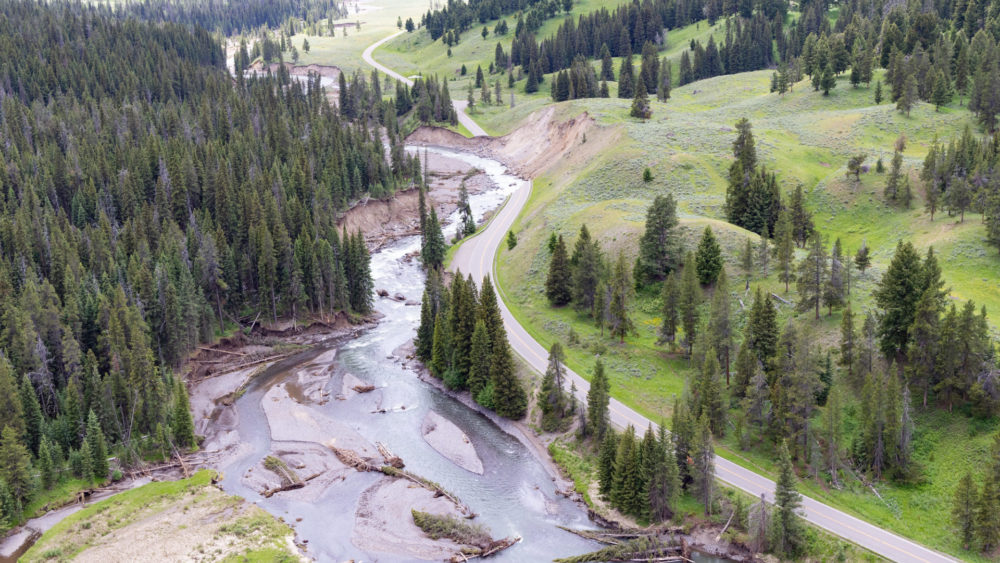In June, historic flooding temporarily closed Yellowstone National Park and isolated surrounding communities. The catastrophic floods that hit the park caused extensive damage to numerous roads and bridges, forcing the temporary closure and evacuation of the park. Rapid recovery efforts began immediately, both within Yellowstone and in the surrounding communities.
Yellowstone Forever opened the Resiliency Fund to provide immediate financial support for the park’s most pressing needs. While federal funding will go a long way in helping restore the park’s infrastructure, there are other needs in which Yellowstone Forever can help the park community.
Through the Yellowstone Resiliency Fund, the park has already requested support for immediate needs like:
- Two new shuttle vans. The Old Gardiner Road is a critical connection between Gardiner and Mammoth Hot Springs for NPS employees, and shuttle vans are urgently needed to facilitate access while a new roadway is built. These vans will also offer sustainable transportation that can last into the future.
- Childcare, summer day camps, and playground amenities to provide a critical need for working parents within the Yellowstone community. The Yellowstone Forever Institute pivoted quickly after the flooding and launched the Beyond Yellowstone Adventure Camp—a multi-week summer program geared toward local area school aged children with a priority for those directly impacted from the flood. Thanks to generous support, this program is offered free of charge for those families harshly impacted.
- In-park counseling. After several years of unprecedented challenges, Yellowstone National Park staff now have access to in-park counseling through the Teton Inter-Agency Peer Support (TIPS). This multi-agency group of first responders are trained and available for each other. First responders and employees and their family members may contact any one of the TIPS peer supporters or participating therapists at any time for resources, including one-on-one confidential sessions, resiliency training, and proactive community building.
While great progress has been made, there is still a tremendous amount of work to accomplish in the months and years ahead to support the park’s long-term recovery. As we move forward through the next several months, we will continue to provide updates on rebuilding efforts and critical park needs.

Comments are closed.